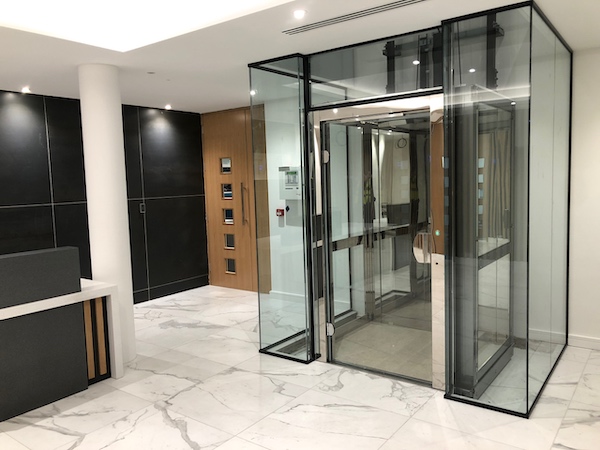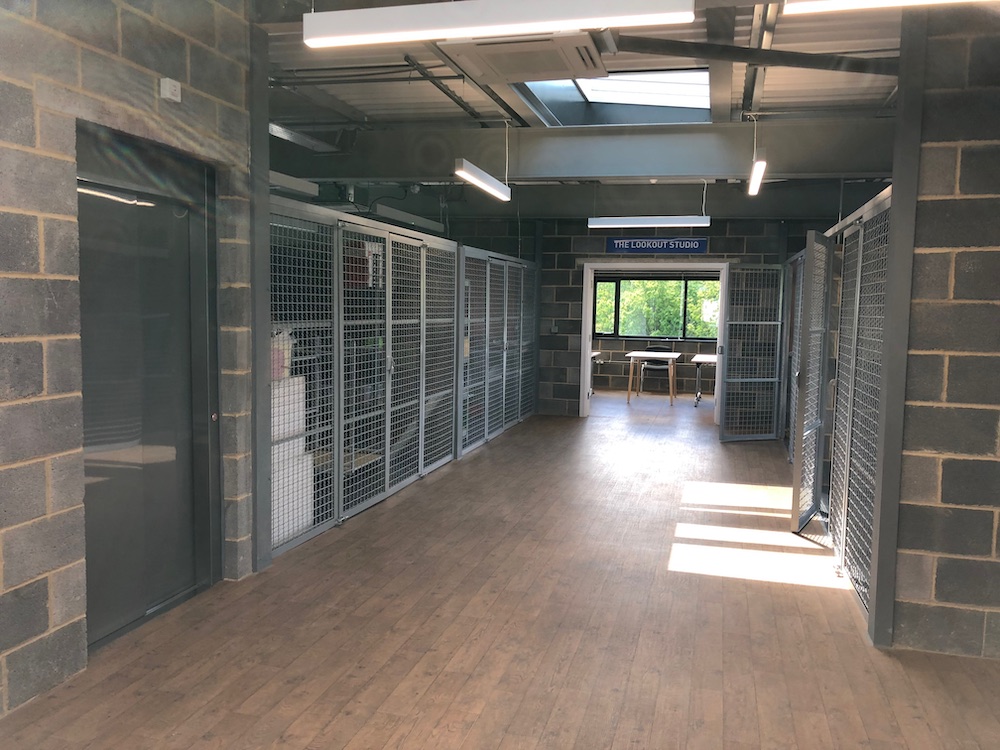Cabin lifts are a type of lift that few people outside of the lift industry know about or would even consider for their project. They are a hybrid solution between a fully enclosed platform lift and a passenger lift. Instead of just a platform moving within a shaft, a cabin lift has a fully built lift car and can come with swing landing doors like a platform lift or fully automatic sliding doors like a passenger lift. This flexibility makes it perfect for low rise solutions where a passenger lift and the enabling works involved with its installation can be expensive.

The cabin lift shares more similarities with the passenger lift compared with a platform lift. The lift has a full lift car that can run inside either a masonry lift shaft or a steel one. The cabin lift only requires a landing push button to be selected once rather than being continuously held down like a platform lift. The cabin lift can come with fully automatic sliding doors so looks and feels exactly the same as a passenger lift that is find in a shopping centre. The main difference between the cabin lift and the passenger lift is that the speed of the cabin lift is rated at 0.15m/s, which some might say is slow but for a typical floor to floor measurement of 2.7 metres, it will only take 18 seconds.
There are several advantages of using a cabin lift over a passenger lift for a project. Cabin lifts have significantly shallower pits, moreover our cabin lifts have the shallowest pit on the market at only 130mm! In comparison a typical passenger lift pit requires 1100mm, this can be significant especially in basements where excavation and tanking can prove difficult.


In addition to the shallower pit, our cabin lifts have lower headroom requirements with a minimum floor to ceiling height of 2150mm. This headroom height is typically lower than most ceilings therefore adding a cabin lift into an existing structure is significantly easier. In comparison a passenger lift typically requires a minimum of 3400mm above the finished floor level which can impact floors above or limits the location of a lift.
As well as less shaft space vertically, a cabin lift’s drive mechanisms are significantly slimmer than a traditional passenger lift. With only 300-350mm taken up instead of 550mm you get more lift car for your lift shaft which means less impact on any surrounding rooms and the overall fit out design of a project. Furthermore our cabin lifts only require fixing points on one side with both guides therefore we can achieve entry points on up to 3 sides of the lift. Several passenger lift manufacturers simply cannot offer this option.


You might be thinking that with less space requirements there would be a downgrade in quality or reliability. This is simply not the case! We are able to offer a wide range of both standard and premium finishes as well as a bespoke finishes service for luxury projects using some of the most well known stainless steel providers from around the world. Our bespoke finishes schedule is not exclusive to just the interior of the lift, we offer both custom made swing landing and automatic sliding doors. Bespoke finishes from previous projects can be provided upon request.
Finally, and probably the most important difference between a cabin lift and a passenger lift is cost. The cabin lift itself is significantly more affordable and with less extensive enabling works required, builders costs are cheaper too. This makes a cabin lift the perfect solution for low rise vertical solutions.
Click here to download our cabin lifts brochure!
